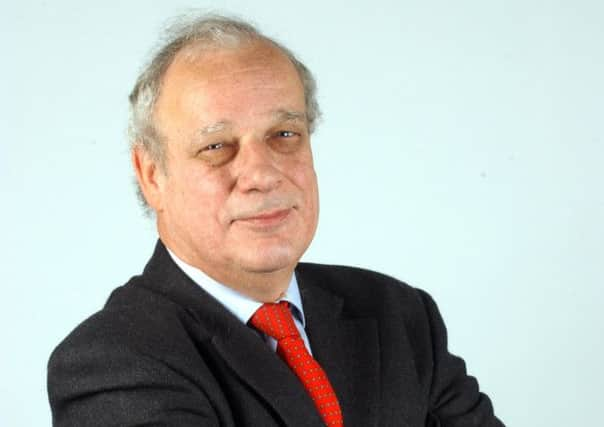Comment: When bullish is good but bearish is sensible


But an era of cheap money is drawing to a close. Central banks in Britain and America are moving to end quantitative easing. Interest rates are set to move higher. Time, surely, to take profits and run.
Chris Burvill, director of UK equities at Henderson, says the FTSE-100 is set to smash previous records over the next six months. On Friday, it closed at 6,844.5, up 0.4 per cent on the week, having traded this year between 6,400 and 6,900. A convincing break through the previous all-time high of 6,950, set in late 1999, still eludes it.
Advertisement
Hide AdAdvertisement
Hide AdBut Burvill told Citywire’s Robert St George last week he believes the UK blue-chip index could close in on 7,500 before the end of the year.
“If I have this right, in the autumn we will see an upturn in earnings, sterling weaken, and gilts weaken. A lot of this depends on everything going right, but I think it is absolutely achievable.”
So why has the market been so range-bound for the past five months?
“We all hoped that by now we would have seen some earnings growth. One of the reasons is that the strong pound – up 10 per cent against the dollar over the past year – has held back earnings growth. My argument is ‘be patient’ ”.
He believes sterling could become a positive and also expects the euro to regain some lost ground as confidence in the single currency and continent’s economy recovered.
Additional support for the FTSE, he said, would come from increased consumer and business confidence.
The CBI business optimism survey is now in positive territory, while according to Thomson Reuters Datastream for the first time since 2011 more finance chiefs are in expansionist mood.
As for bonds, Burvill warns of the risk of gilts tumbling later this year, which could boost shares if money is reallocated from fixed income.
Advertisement
Hide AdAdvertisement
Hide AdOn equities, he says there is still “cracking value” available in the FTSE 100, citing Tate & Lyle as a “classic example” of a stock valued only on current earnings, which overlooked the latent potential of its management and business. Such companies could help the FTSE hit 7,500.
In the opposite corner is Stuart Cowley, manager of the £128 million Old Mutual Managed fund. He told FE Trustnet’s Joshua Ausden that he has raised his cash exposure in the Old Mutual Managed Fund to more than 28 per cent, fearing a tough period ahead. Bond and equity funds “have had a fantastic run, but now that liquidity is coming to an end and we’re coming off that drug, I anticipate a much more difficult period.
“We don’t want to be buying in at the top of the market, with many now anticipating [a more significant correction] on the horizon.”
Cowley thinks it’s very possible that both equities and bonds will post negative returns this year for the first time in a number of years.
“There is the assumption that this is all going to go on forever, but there will be a year that both asset classes lose money. The way it’s shaping up I think 2014 could be the year. The emergency is over and so we don’t need emergency policy. I expect bond yields to rise.”
I lean to the bearish view, and investors in for a short-term ride should consider taking profits. But those saving on a regular monthly basis for the long haul should stay put, particularly if they are in a broad-based and geographically diversified fund or trust.
Meanwhile, Invesco Perpetual managed Edinburgh Investment Trust, helmed by Mark Barnett, will soon begin to benefit from far lower borrowing costs.
The £1.4bn trust is geared through two secured loans, one for £100m at 7.75 per cent dated 2022 and another for the same amount at a rate of 11.5 per cent.
Advertisement
Hide AdAdvertisement
Hide AdThis more expensive debenture matures in June, and a cheaper £100m credit line has been negotiated with the Bank of New York Mellon. The new facility will be available for the debenture’s redemption date of 30 June and should bring a material saving in interest costs.
In both of the past two years, Edinburgh has paid out £19.5m in borrowing costs.
The interest also represented a substantial proportion of the trust’s total income this year of £55.4m. The lower interest charges should help to lift the trust’s performance – trailing the UK equity income sector average over one and three years.